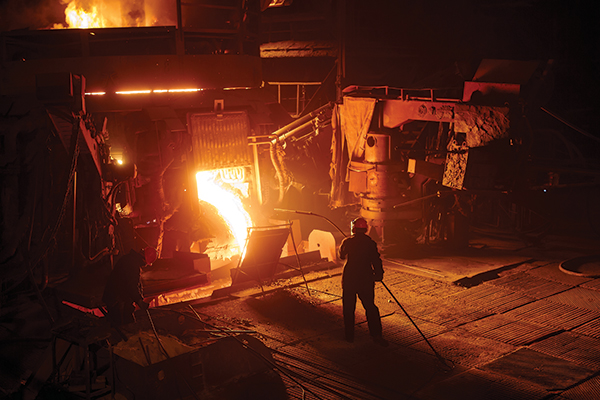Oregon’s metals and machinery ecosystem keeps expanding. One impetus was the 2016 establishment of the Oregon Manufacturing Innovation Center (OMIC) and its R&D and training centers in Columbia County. OMIC’s purpose is to augment Greater Portland’s metals, machinery and manufacturing industry and train the next advanced manufacturing workforce. OMIC will support the retention and expansion of existing companies through the capabilities of the R&D Center and the skilled talent from the Training Center.
OMIC R&D is a collaboration of industry members, the State of Oregon and three academic research members — the Oregon Institute of Technology, Oregon State University and Portland State University. Portland Community College has opened an OMIC Training Center adjacent to OMIC R&D’s facility in Scappoose, northwest of Portland. National and global manufacturing companies take advantage of the research and collaboration opportunities afforded by OMIC, in such areas as additive manufacturing, advanced alloys, Automation Industry 4.0 and subtractive manufacturing.
A recent addition to OMIC R&D’s roster of 37 industry members is Mastercam/CNC Software, Inc., headquartered in Tolland, Connecticut. Mastercam is a suite of CAD/CAM software created to reduce production time and expense with efficient machining strategies and advanced toolpath technologies like Accelerated Finishing™ and Dynamic Motion™.
“This collaboration aligns well with our dedication to research and development aimed at manufacturing technology.”
̶— Graug Campbell, executive director of OMIC R&D
“We are extremely excited to have Mastercam as a member,” said Craig Campbell, executive director of OMIC R&D. “CNC Software, Inc. will provide us with the ability to add uniform programming language that we can use on our broad range of machines, as well as opportunities in training and workforce development due to their investment in that area.”
“I am very excited that Mastercam has become a member of OMIC R&D,” added Stas Mylek, partnership program manager of CNC Software, Inc. “We immediately began discussing opportunities for Mastercam to engage in to introduce students to our premier programming language. This collaboration also aligns well with our dedication to research and development aimed at manufacturing technology. Our partnership will most definitely play a part in setting the tenor for the future of manufacturing.”
In August 2021, OMIC broke ground on its newest building, the Additive Innovation Center that will focus on technologies as 3D printing. The 30,000 square foot center will feature a large industrial workshop, office and classroom space, partner workspaces and a student lounge.
A Second Industry Consortium
Another resource for metals companies doing business in the Beaver State is the Oregon Metals Initiative, a consortium of metals companies and research institutions dedicated to improving the competitiveness of the state’s metals industry. OMI’s main objectives include:
- Developing new technologies and new applications of existing technologies;
- Increasing metals research capacity, accessibility, and infrastructure;
- Encouraging collaboration on research between the metals industry and Oregon’s scientific research institutions; and
- Improving the competitive position of Oregon’s metals industry.
- Research institutions involved in OMI include Portland State University, Oregon State University and George Fox University.
In August 2021, Portland-based Schnitzer Steel Industries, Inc. announced the successful restart of production at its Cascade Steel Rolling Mills in McMinnville, Oregon, and an agreement to purchase the assets of Columbus Recycling in the Southeast region of the United States. The Cascade mill had been damaged in a May 2021 fire. Cascade resumed operations with a full workforce several weeks ahead of schedule and was accepting orders for its full range of finished steel products based on the rolling schedule.
“I am proud of our team’s exceptional efforts to bring the mill back into production ahead of schedule, enabling us to support our customers with high quality finished steel products,” said Tamara Lundgren, Chairman and Chief Executive Officer of Schnitzer Steel Industries.
“Cascade is powered by electricity that is more than 95% carbon-free. Combined with the use of recycled metal as its primary raw material, the steel made in our electric arc furnace steel mill has an exceptionally low carbon impact as compared to the industry average.”

